Especially wine lovers who eat. Primary among the virtues of this grape variety is its phenomenal versatility and excellence as a partner for food. The key reason it is so successful at the table is that Pinot Bianco “speaks softly” with its aromas and flavors, none of which are so “pushy” that they clash with almost any food—or preparation or spice or sauce or condiment. Another way of characterizing this key virtue is that fine Pinot Bianco is typically very coherent and integrated even in its youth. What this conveys in sensory terms is soft texture resulting from acidity that freshens the wine but is so finely interlaced with the fruit flavors that young examples seem “complete,” with no “push – pull” effect of acid and fruit countering one another (as in many young Rieslings, for example).
Stated simply, a wine that isn’t internally “fighting itself” is way less likely to fight with anything on your plate.
Winemaking in Alto Adige almost never involves the use of new oak with Pinot Bianco, so the phenomenon of toasty notes from wood charring countering ripe fruit and buttery notes (as in many young Chardonnays, for example), is likewise not an issue. When wood vessels of various sizes are used in the fermentation or aging of Pinot Bianco in Alto Adige, older barrels or casks are generally employed, and when new oak is involved, the wood us usually “coopered” into barrels using steam rather than fire, taking charry, toasty aromas and flavors out of play.
Just to round out these considerations, those “buttery” notes you’ll recall from many Chardonnays aren’t rogue element in the flavor equation either, as winemakers generally avoid malolactic fermentation (“malo” or “MF” for short) to soften Pinot Bianco or make it seem richer. The fruit grown in the region is already “in balance” when it comes off the vine, so there’s no need to tone down the acidity or “plump up” the fruit with malo. Some of the more ambitious examples of Alto Adige Pinot Bianco are aged on their fine yeast lees to lend complexity, but this is a gentle and natural process for augmenting the finished wines, and it tends to make the wines even more integrated and complete.
The upshot of these observations is this: If you really care about how your wines and foods interact with one another, seeking synergies rather than just an absence of conflict, then you need to try Pinot Bianco from Alto Adige.
I’m certain that some readers will still harbor some doubts after reading what I’ve already written here, so I should acknowledge and address them head-on.
One might be, “Hey, Franz, if these wines are so good, and so wonderful with food, why aren’t they already more famous?” Part of the answer is that Pinot Bianco is subtle rather than dramatic, and subtlety always takes more time to gain appreciation—whether we’re talking wine or art or music. If you take another look at the case I made above, you’ll see that a big part of it is about what Pinot Bianco is not, and what it doesn’t do. This makes it less inherently “striking” than many other wines, in the same way that modal jazz was less striking than bebop (because they key thing about Miles Davis and Bill Evans in the late 1950s was about the silences in their music, as opposed to lots of notes played with predetermined chord changes).
Moreover, Pinot Bianco’s subtlety is especially valuable at the table, so these wines are at a disadvantage in wine competitions or in big tastings conducted by critics. By extension, appreciating Pinot Bianco’s synergy with many foods requires paying attention to more than one thing at a time, and indeed many things over the course of many meals. Plenty of people really don’t seem to care how their wines and foods interact with one another, thinking, “If the wine tastes good and the food does too, then that’s that.” I don’t look down on those who think this way, knowing that many people are intimidated by wine’s complexity, and would rather not complicate matters further by bringing food pairing attributes into play. However, appreciating wine more fully is a pleasurable but lifelong challenge for everyone, and appreciating how wines work with food is an important part of the process—but a relatively late-stage one that doesn’t include everybody.
One last reason why some might harbor doubts is that, quite simply, one person’s “subtle” might be another person’s “bland.” The points I’ve already made in favor of Pinot Bianco’s subtlety don’t quite address this fully, as a lot of wines made from this grape really are bland. This is especially true of Pinot Blanc from Alsace, which remains the most widely available rendition in many countries, including the USA. However, this isn’t the fault of the grape, but rather the fault of the Alsace appellation’s wine regulations, which permit inclusion of the distinct variety Auxerrois to be blended with Pinot Blanc or, “bizarrely,” even comprise 100% of a wine labeled as Pinot Blanc. That quote of “bizarrely” comes from Jancis Robinson et al.’s Wine Grapes, which regards the rule as bizarre in relation to Alsace being “a region which prides itself on varietial labelling…”. Auxerrois isn’t even part of the Pinot family of grapes, properly speaking, and especially in the southern part of Alsace, produces wines that are bland and lacking in structure.
There are exceptions to everything in the world of wine, as I suggested in my opening paragraph here, so I don’t wish to dismiss all bottlings of Pinot Blanc from Alsace. However, I do insist that Alsace is a bad place to go to learn about true Pinot Blanc, since there’s actually more Auxerrois planted there than Pinot Blanc, though almost all of that Auxerrois goes into bottles labeled as “Pinot Blanc.” For someone like me who loves and defends “the real thing,” Alsace ‘s laws and practices are not only bizarre, but also infuriating.
So, where should you go to learn about this criminally under-undervalued variety? Alto Adige is definitely my “go-to” region, but it isn’t the only one. Friuli is another Italian region that makes excellent Pinot Bianco, and many of the best ones are grown and made the distinct appellation of Collio, along the eastern border with Slovenia at the top of the Adriatic Sea. Some fine examples are made within Slovenia, but few make it out of that beautiful country. Just to the north, though, in the Austrian region of South Styria (or Südsteiermark in German), marvelous examples are made and labeled as Weissburgunder. This same designation is also used—of course—in Germany, where some fabulous examples have been made in the Rheingau and Rheinhessen region for decades (and now, due to climate change, even in the Mosel). California has historically not been a good location for the grape, as it often ripens too quickly to acquire complexity and gets “Chardonnized” with wood to make up for that. Oregon is a much more promising source, and is already turning out some excellent renditions, as is British Columbia’s Okanagan Valley in Canada. I believe it is only a matter of time before Michigan and New York’s Finger Lakes will also become exemplary regions of origin for Pinot Blanc.
For now, though, Alto Adige is the one place in the world that is turning out excellent renditions of Pinot Bianco in serious numbers every year, with the great majority priced under $30. This area was part of the Austro-Hungarian Empire until the end of World War I, after which it was ceded to Italy, which was on the victorious side of that war. German is still very widely spoken in the area, and indeed the appellation is usually designated in both languages as “Südtirol – Alto Adige” or vice-versa, with the Italian name appearing first in order. The same dual-language practice is also adopted in many cases for identifying producers and grape varieties, which is understandable for historical, cultural, and linguistic reasons but is definitely not advantageous for marketing the wines.
Being an unapologetic advocate, I’ve designated all the wines recommended below in Italian (and hope to be cut some slack on this in view of the fact that my family name is Austrian). I believe each of the wines below will endear you to this excellent grape variety—especially if you enjoy any or all of them with food:
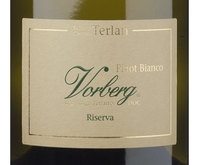 Cantina Terlano (Alto Adige Terlano) Pinot Bianco Riserva “Vorberg” 2017 ($45, Banville): Over and above being a standard-bearer for Pinot Bianco from Alto Adige, this is one of the world’s truly great white wines. Invariably delicious when first released but equally delicious in different ways over as many as two decades of development, Vorberg Riserva is uncanny for a white that isn’t bolstered by fancy oak like the aristocrats of the Côte de Beaune in Burgundy. I buy this almost every year and do my level best to keep my mitts off of it to allow the bottles to show their stuff over time, but my best is usually not good enough—I drink far too many of them before they’ve shows all the facets they could reveal over an extended period. This 2017 vintage may not quite be up to 2014 or 2016, which were fantastic (and remain so, of course), but I may be underestimating it a bit at present. Seriously rich and with a fruit profile that seems a bit riper than usual, this shows quite impressive palate weight but remains fresh thanks to more-than-adequate acidity. It benefits greatly from undertones of saline minerality on the mid-palate that become overtones in the finish. The minerality offers a wonderful counterweight to the ripe fruit flavors that recall baked apple pie filling, replete with the spicy edge and all. Notably better when re-tasted on the second night after opening, this may prove to be yet another ageless wonder from this great house. I’ve already tasted both the 2018 and 2019 vintages, and both are terrific, but this 2017 will likely be the easiest for most readers to purchase. 95
Cantina Terlano (Alto Adige Terlano) Pinot Bianco Riserva “Vorberg” 2017 ($45, Banville): Over and above being a standard-bearer for Pinot Bianco from Alto Adige, this is one of the world’s truly great white wines. Invariably delicious when first released but equally delicious in different ways over as many as two decades of development, Vorberg Riserva is uncanny for a white that isn’t bolstered by fancy oak like the aristocrats of the Côte de Beaune in Burgundy. I buy this almost every year and do my level best to keep my mitts off of it to allow the bottles to show their stuff over time, but my best is usually not good enough—I drink far too many of them before they’ve shows all the facets they could reveal over an extended period. This 2017 vintage may not quite be up to 2014 or 2016, which were fantastic (and remain so, of course), but I may be underestimating it a bit at present. Seriously rich and with a fruit profile that seems a bit riper than usual, this shows quite impressive palate weight but remains fresh thanks to more-than-adequate acidity. It benefits greatly from undertones of saline minerality on the mid-palate that become overtones in the finish. The minerality offers a wonderful counterweight to the ripe fruit flavors that recall baked apple pie filling, replete with the spicy edge and all. Notably better when re-tasted on the second night after opening, this may prove to be yet another ageless wonder from this great house. I’ve already tasted both the 2018 and 2019 vintages, and both are terrific, but this 2017 will likely be the easiest for most readers to purchase. 95
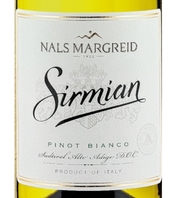 Nals Margreid (Alto Adige) Pinot Bianco “Sirmian” 2018 ($34): This “Sirmian” bottling from Nals Margreid is among the best Pinot Bianco examples from Alto Adige. The proprietary name is derived from a renowned winegrowing area with very complex soils at a lofty elevation, and this wine’s minerality and complexity are consistently excellent as a result. Notes of apple pie filling with tinges of freshly squeezed citrus juice and undertones of tropical fruit make this a generously flavored, showy wine, but experience has proved that it is as age-worthy as it is flashy in its youth. Old vines and extended aging on fine yeast lees also help to explain this wine’s intricacy. At this stage, the wine shows impressive concentration and depth of flavor and breadth as well, with rich fruit flavors that spread across the palate and prove very persistent. Sufficiently substantial to pair with a dishes as serious as grilled swordfish or a chop of pork or veal, this is serious, impressive juice. Although this top-tier bottling from an excellent producer is among the pricier Pinot Biancos, it is worth the money, and you’ll only need one bottle to be convinced of that. 94
Nals Margreid (Alto Adige) Pinot Bianco “Sirmian” 2018 ($34): This “Sirmian” bottling from Nals Margreid is among the best Pinot Bianco examples from Alto Adige. The proprietary name is derived from a renowned winegrowing area with very complex soils at a lofty elevation, and this wine’s minerality and complexity are consistently excellent as a result. Notes of apple pie filling with tinges of freshly squeezed citrus juice and undertones of tropical fruit make this a generously flavored, showy wine, but experience has proved that it is as age-worthy as it is flashy in its youth. Old vines and extended aging on fine yeast lees also help to explain this wine’s intricacy. At this stage, the wine shows impressive concentration and depth of flavor and breadth as well, with rich fruit flavors that spread across the palate and prove very persistent. Sufficiently substantial to pair with a dishes as serious as grilled swordfish or a chop of pork or veal, this is serious, impressive juice. Although this top-tier bottling from an excellent producer is among the pricier Pinot Biancos, it is worth the money, and you’ll only need one bottle to be convinced of that. 94
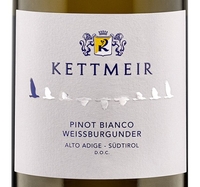 Kettmeir (Alto Adige) Pinot Bianco 2019 ($22, SM USA, Miami): The 2019 rendition of this wine is very impressive—rich, flavorful, and very persistent in its finish for this grape variety. It shows a riper, more dramatic flavor profile than some comparably prices releases such as the “Merus” bottling from Tiefenbrunner, with fruit that recalls melons and stone fruits with less citrus tang and a touch of tropical fruit. However, there’s plenty of acidity to keep this fresh and lifted through the finish, though it is so well folded into the fruit that this seems quite seamless and rounded. There’s also a hint of citrus pith bitterness in the finish, but I found that very pleasant and beneficial for the wine’s overall complexity. 93
Kettmeir (Alto Adige) Pinot Bianco 2019 ($22, SM USA, Miami): The 2019 rendition of this wine is very impressive—rich, flavorful, and very persistent in its finish for this grape variety. It shows a riper, more dramatic flavor profile than some comparably prices releases such as the “Merus” bottling from Tiefenbrunner, with fruit that recalls melons and stone fruits with less citrus tang and a touch of tropical fruit. However, there’s plenty of acidity to keep this fresh and lifted through the finish, though it is so well folded into the fruit that this seems quite seamless and rounded. There’s also a hint of citrus pith bitterness in the finish, but I found that very pleasant and beneficial for the wine’s overall complexity. 93
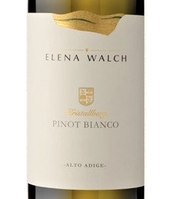 Elena Walch (Alto Adige) Pinot Bianco Kristallberg 2019 ($28): This is a terrific rendition of Pinot Bianco sourced from a vineyard site perched above 1,800 feet of elevation. I tasted this 2019 side-by-side with the 2018 vintage, and both were equally good, so don’t hesitate to purchase the slightly older wine if you see it on offer. The 2019 is a bit richer than the norm for the wines in this category that are available in the USA, but there’s nothing “heavy” or ponderous about it—just generous fruit that is deftly interlaced with energizing acidity. Fruit notes recalling baked golden apples with a squeeze of citrus acidity. 93
Elena Walch (Alto Adige) Pinot Bianco Kristallberg 2019 ($28): This is a terrific rendition of Pinot Bianco sourced from a vineyard site perched above 1,800 feet of elevation. I tasted this 2019 side-by-side with the 2018 vintage, and both were equally good, so don’t hesitate to purchase the slightly older wine if you see it on offer. The 2019 is a bit richer than the norm for the wines in this category that are available in the USA, but there’s nothing “heavy” or ponderous about it—just generous fruit that is deftly interlaced with energizing acidity. Fruit notes recalling baked golden apples with a squeeze of citrus acidity. 93
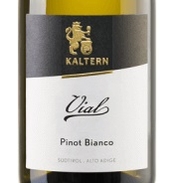 Cantina Kaltern (Alto Adige) Pinot Bianco “Vial” 2019 ($22): I’ve also tasted the three vintages of this wine leading up to this release from 2019, and all were excellent. Kaltern is a co-op, but co-ops are hardly all of one piece, and this is an excellent one. Medium-bodied and full of flavor, this is nevertheless still subtle and extremely well integrated, and in these respects, this is a classic rendition of the category. The fact that this wine is so consistently good is surely explained in part by the fact that there’s an entry-level wine one click down from this one, without the proprietary name of “Vial,” so the winemaking team can reserve the best juice for this bottling. With that noted, however, the entry-level wine from the 2020 vintage was also very good when I tasted it several months ago, so try that when you can. 92
Cantina Kaltern (Alto Adige) Pinot Bianco “Vial” 2019 ($22): I’ve also tasted the three vintages of this wine leading up to this release from 2019, and all were excellent. Kaltern is a co-op, but co-ops are hardly all of one piece, and this is an excellent one. Medium-bodied and full of flavor, this is nevertheless still subtle and extremely well integrated, and in these respects, this is a classic rendition of the category. The fact that this wine is so consistently good is surely explained in part by the fact that there’s an entry-level wine one click down from this one, without the proprietary name of “Vial,” so the winemaking team can reserve the best juice for this bottling. With that noted, however, the entry-level wine from the 2020 vintage was also very good when I tasted it several months ago, so try that when you can. 92
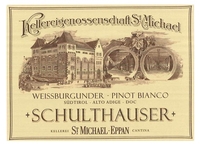 San Michele – Eppan (Alto Adige) Pinot Bianco “Schulthauser” 2019 ($22): This wine bears a charmingly old-fashioned label, but there’s nothing old-fashioned about the wine, which is impeccably fresh despite nearing the three-year mark from when the fruit was picked. The aromas are subtle, as is almost always the case with this variety, with ripe pear and white melon suggestions that become more expressive once the wine is on the palate. Medium-bodied and rounded in texture upon entry, but freshened by very well integrated acidity, this is a delicious example of the category, which is also to say that it is a supremely versatile partner for dishes appropriate for white wine. 92
San Michele – Eppan (Alto Adige) Pinot Bianco “Schulthauser” 2019 ($22): This wine bears a charmingly old-fashioned label, but there’s nothing old-fashioned about the wine, which is impeccably fresh despite nearing the three-year mark from when the fruit was picked. The aromas are subtle, as is almost always the case with this variety, with ripe pear and white melon suggestions that become more expressive once the wine is on the palate. Medium-bodied and rounded in texture upon entry, but freshened by very well integrated acidity, this is a delicious example of the category, which is also to say that it is a supremely versatile partner for dishes appropriate for white wine. 92
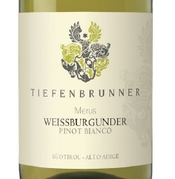 Tiefenbrunner (Alto Adige) Pinot Bianco “Merus” 2019 ($22, Winebow): This wine has multiple virtues including relatively wide availability, a wisely-utilized screw cap closure, very reasonable pricing and—last but hardly least, excellent quality. It is a bit fresher and lighter by comparison to the norm, but still a generous wine with open fruit flavors, interesting mineral undertones, and admirable balance thanks to very well integrated acidity. Although I rarely find opportunities to taste it, Tiefenbrunner also makes a higher-level release of Pinot Bianco with a proprietary name of “Anna” in the “Turmhof” line, so be on the lookout for that. 92
Tiefenbrunner (Alto Adige) Pinot Bianco “Merus” 2019 ($22, Winebow): This wine has multiple virtues including relatively wide availability, a wisely-utilized screw cap closure, very reasonable pricing and—last but hardly least, excellent quality. It is a bit fresher and lighter by comparison to the norm, but still a generous wine with open fruit flavors, interesting mineral undertones, and admirable balance thanks to very well integrated acidity. Although I rarely find opportunities to taste it, Tiefenbrunner also makes a higher-level release of Pinot Bianco with a proprietary name of “Anna” in the “Turmhof” line, so be on the lookout for that. 92
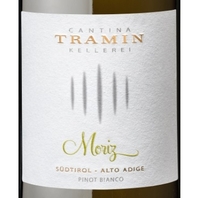 Cantina Tramin (Alto Adige) Pinot Bianco “Moriz” 2020 ($20): Indisputably delicious and highly versatile, this “Moriz” bottling from Tramin also offers excellent value. I’m often able to find it at retail for less than $20, and buy it in every vintage, and have never pulled the cork on a bottle that proved disappointing. Medium-bodied with very good acidity-to-fruit balance, this is a classic specimen of the breed, with lots of little aromatic and flavor details – but none that stands out so prominently as to obscure the others. Recommended food pairing? Anything that goes with white wine, and some dishes that you wouldn’t guess would go with white wine, or nothing at all—as this is a delicious sipping wine as well. 92
Cantina Tramin (Alto Adige) Pinot Bianco “Moriz” 2020 ($20): Indisputably delicious and highly versatile, this “Moriz” bottling from Tramin also offers excellent value. I’m often able to find it at retail for less than $20, and buy it in every vintage, and have never pulled the cork on a bottle that proved disappointing. Medium-bodied with very good acidity-to-fruit balance, this is a classic specimen of the breed, with lots of little aromatic and flavor details – but none that stands out so prominently as to obscure the others. Recommended food pairing? Anything that goes with white wine, and some dishes that you wouldn’t guess would go with white wine, or nothing at all—as this is a delicious sipping wine as well. 92
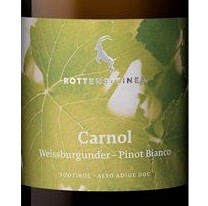 Rottensteiner (Alto Adige) Pinot Bianco “Carnol” 2020 ($17): This fine Pinot Bianco is above average in a category that is itself way above the global average among white wines. Unusually expressive aromatically, it offers up scents and flavors recalling grated citrus rind, pear, and baked apple, with the citrus rind note showing up again in the finish in the guise of a hint of pleasant bitterness that offsets the juicy, primary fruit flavors. My first encounter with this producer was tasting this wine in July of 2021, and though I don’t see anyone offering it for sale in the USA, let’s hope an importer brings it to our side of the Atlantic. 91
Rottensteiner (Alto Adige) Pinot Bianco “Carnol” 2020 ($17): This fine Pinot Bianco is above average in a category that is itself way above the global average among white wines. Unusually expressive aromatically, it offers up scents and flavors recalling grated citrus rind, pear, and baked apple, with the citrus rind note showing up again in the finish in the guise of a hint of pleasant bitterness that offsets the juicy, primary fruit flavors. My first encounter with this producer was tasting this wine in July of 2021, and though I don’t see anyone offering it for sale in the USA, let’s hope an importer brings it to our side of the Atlantic. 91
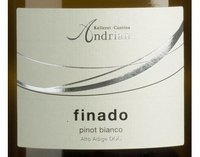 Cantina Andrian (Alto Adige) Pinot Bianco “finado” 2019 ($20, Banville): Still very tart and tight (when tasted in late summer 2021), this wine is quite bright and refreshing, but also displays impressive weight on the palate when permitted to breathe and warm in a glass. Indeed, it seemed significantly richer and more complex when tasted on the night after I first opened it (after spending 20+ hours uncorked in a refrigerator). That suggests that this is a great candidate for cellaring for a few years, as it lost none of its freshness as it benefitted in all other respects. The fruit aromas and flavors suggest golden apples, but the acidity recalls either green apples or citrus fruits—or both. Nice mineral underpinnings lend intricacy to the mid-palate and come to the fore in the finish. This may very well merit a higher score when reconsidered in a few years. 91
Cantina Andrian (Alto Adige) Pinot Bianco “finado” 2019 ($20, Banville): Still very tart and tight (when tasted in late summer 2021), this wine is quite bright and refreshing, but also displays impressive weight on the palate when permitted to breathe and warm in a glass. Indeed, it seemed significantly richer and more complex when tasted on the night after I first opened it (after spending 20+ hours uncorked in a refrigerator). That suggests that this is a great candidate for cellaring for a few years, as it lost none of its freshness as it benefitted in all other respects. The fruit aromas and flavors suggest golden apples, but the acidity recalls either green apples or citrus fruits—or both. Nice mineral underpinnings lend intricacy to the mid-palate and come to the fore in the finish. This may very well merit a higher score when reconsidered in a few years. 91
Connect on Twitter: @Michael_Franz
More wine reviews: Wine Reviews
